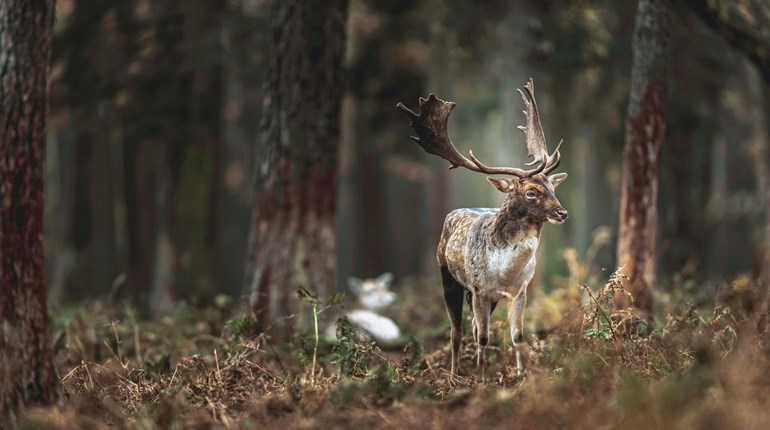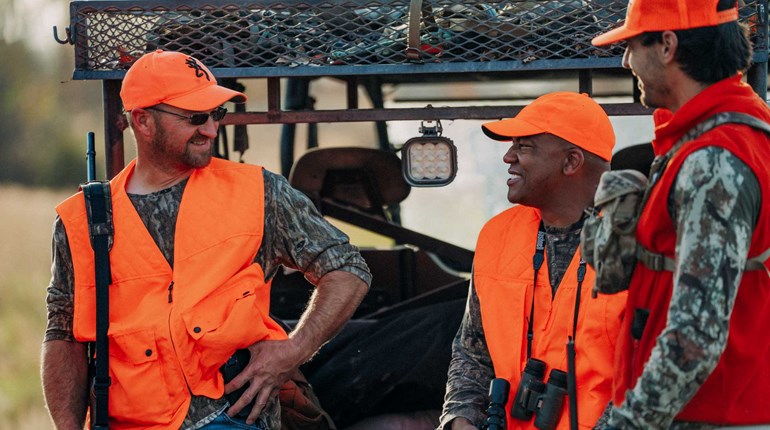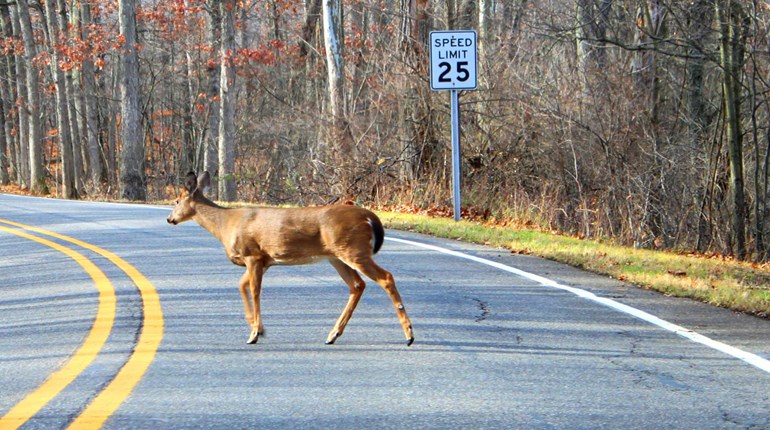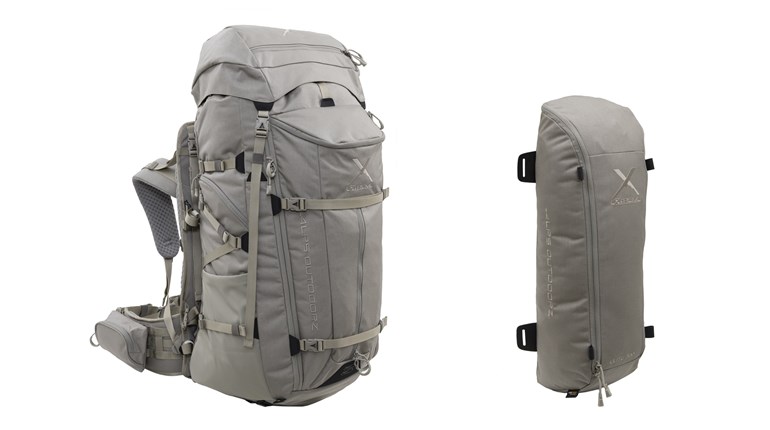
The boreal forest squeezing the glazed-gravel road from both sides looked like an endless black-and-white photo, with spruce boughs and dogwood thickets slouching beneath ice-glazed snow they first shouldered five days before. The sight looked forbidding, but no one ever claimed deer hunting near the Canadian border in northeastern Minnesota was easy. Welcome to the Superior National Forest, home of the Boundary Waters Canoe Area Wilderness.
Even in warmer, drier Novembers, the Boundary Waters region promises no hunter a good look at one of its borealis bucks, the deep-chested, heavy-bodied, thick-antlered subspecies of Odocoileus virginianus white-tailed deer.
After all, this is the northern fringe of whitetail country, the southern fringe of moose country, and the outer fringe of hope for solitary hunters who prefer quality over quantity in their deer. These forests grow big bucks, but even the most persistent and optimistic hunters often go days without seeing an antler or hearing a snort.

And so deer hunters sighed, cursed and groaned in November 2017 while setting up their wall tents and parking their camper-trailers at abandoned trailheads, old log-landings and dormant gravel pits along the rare roads of northern St. Louis County. Slush that pressure-washed the forest earlier that week never had a chance to melt before deer season, followed as it was by snow and brutal cold that froze everything in place.
In eyeballing the forest’s white burden, arriving hunters figured their visibility would be cut by half, at the least.
And what about their frustration after hunting that snow-encrusted apocalypse, which offered all the warmth and comfort of dry ice? It had doubled, at the least.
That was Stu Osthoff’s estimate when he unzipped the vestibule flap on his outfitters’ tent and stepped inside after dark on Nov. 8, deer season’s fifth day. Osthoff lives about 50 miles southwest of his deer camp, which he’s maintained in various forms and at multiple sites since settling near Ely, Minn., in the late 1970s. He could have stayed home to hunt his own land and adjoining state forest, but that country seems tame and confining when compared to the 1.1-million-acre wilderness area and surrounding national forest.
And so here Osthoff was once again, hunting deer he has never forsaken since leaving Wisconsin’s southern farmlands as a young man. Joining him often in recent years are friends Mike Kolbeck, Randy Gregory and Craig Stephani from Wisconsin, who share Osthoff’s love of backwoods bucks.
They also share Osthoff’s opinion that 2017’s deer season might be the toughest hunting conditions they’ve faced. As Kolbeck and Gregory trudged into the tent minutes after Osthoff, they were laughing at the futility of deer season’s first five days.
Five Days, One Spike
They stopped to listen, though, when Osthoff reported seeing a spike buck that day when pausing at just the right slit in the forest to spot it bedded 70 yards away. Just for fun, Osthoff pulled out a grunt-call and coaxed the little buck to rise. It stepped a bit closer but then grew suspicious and shied away into the whiteness.
This was Wednesday, and that spiker was the first deer they had seen since Saturday’s opener. Then again, although conditions were especially tough, it’s not as though the forest’s icy sheaths simply hid a huge herd from this small band of hunters.
Tom Rusch, the Department of Natural Resources’ wildlife manager in nearby Tower, Minn., labels the 2017 gun-hunt “the season from hell.” Still, he notes the region’s springtime population goal is roughly five deer per square mile of forest. Plus, the herd got slammed by a near-record brutal winter in 2012-13, and has been slowly rebuilding since.

Further, you can’t count on fellow hunters to keep deer moving. Hunter densities average about 2.4 per square mile of land, so it’s rare for hunters to bump deer past each other. Besides, most hunters go home by Monday evening, the season’s third day, even when hunting conditions are prime.
“If you set up your deer camp on Tuesday, you’ll pretty much have the area to yourself most years,” Rusch said. “We really don’t see much cabin-based deer camps in that area anymore. Most hunters set up mobile, temporary camps. Most cabins are lake-oriented for summer recreation.”
Prime Still-Hunting
The scarcity of roads and other hunters also makes the Boundary Waters region ideal for still-hunting. Osthoff suggests that guests take a GPS reading where they enter the forest each morning, and then walk about a half-mile before stopping. At that point, add a layer or two and start still-hunting.
Just to be clear, still-hunting doesn’t mean sitting on a stump, stool or treestand. It more resembles stalking, but it’s not that, either. Fred Bear, the late bowhunting legend, defined it best: Still-hunting means moving slowly while looking for deer. Stalking begins after locating your quarry.
The term’s origin traces to deer-hunting author T.S. Van Dyke, who learned the method from the Sioux while hunting Minnesota in the late 1800s. Van Dyke’s hunts there and in northwestern Wisconsin inspired his 1903 book The Still-Hunter, a deer-hunting classic.

Osthoff occasionally sits for hours on treestands near his home south of Ely, but seldom bothers with portable stands when hunting from his Boundary Waters deer camp. And why should he? Rows of buck mounts grace his old home, testifying to his patient, quiet, quick-reacting still-hunting skills. He simply won’t tolerate complacency while slipping along the forest’s bogs, swales, creek bottoms and small ridges.
And unlike many, Osthoff hunts as much as possible during his state’s 16-day season. After entering the forest one pre-dawn a few seasons before, Osthoff led two of us southward from his tent camp before directing us southeast as he turned southwest. Our plan was to keep a large bog between us while spending the day still-hunting and occasionally watching for cruising bucks from atop granite outcrops.
Late in the day, just as Osthoff was wondering why he hadn’t seen a deer in three days, a doe snorted and bounded off with two or three other deer. Osthoff sprinted to higher ground, spotted antlers on one of the fleeing deer and dropped the buck with one shot from his .270 bolt-action. The next morning, the three of us dragged and packed out the beautiful 10-point buck from where it fell 1.5 miles south of our truck.
River Trails
Another advantage of hunting from a Boundary Waters tent camp is that you’re seldom far from lakes and rivers. What the area lacks in roads and hiking trails it makes up in water routes and portages. Osthoff keeps a 20-foot Kevlar canoe strapped atop his truck and, weather permitting, paddles into the wilderness area.
One day while I hunted from camp, Osthoff and our friends Nathan Line of Michigan and Dan Swenson of Minneapolis paddled 2.5 miles downstream before dawn to explore and still-hunt a new area. Realize, of course, that this mileage is an estimate. Few maps adequately portray a river’s tortuous, serpentine course, making you pay double for each mile advanced. Or so it seems.
About three hours after beaching the canoe, Osthoff nearly bumped noses with a doe as it trotted past. He thought the doe looked preoccupied, as if a buck might be hounding her. Osthoff found his grunt-call and imitated a buck zeroing in on a hot doe. Minutes later he spotted a buck peering from a tangle of black spruce 60 yards away, its head framed by foliage as if in a portrait. The buck steered toward Osthoff, who stood motionless. About a minute later it started approaching, watching intently for danger.

When the buck’s view was obstructed by a tree 10 yards away, Osthoff quickly aimed and shot. After gutting the beefy 8-pointer, Osthoff dragged it to the river below. He and Line threw a rope over a tree branch and pulled the buck about 6 feet off the ground to keep it beyond reach of wolves until they could bring the canoe.
And yes, timber wolves are common in this region. Osthoff and his hunting partners seldom lose deer to wolves, but they take few chances. If they’re alone and must leave the carcass temporarily or overnight, they cover it with brush and clothes, and tie it to a tree.
Ice-Breakers
A year later, Osthoff suggested our four-man camp take two canoes and spend a day hunting upriver of our tent. He said he would prefer spending a week or longer deep in the wilderness area, but didn’t want to risk getting stranded by frozen rivers and lakes. Calm, clear skies often freeze slow-moving rivers overnight, which we discovered soon after paddling away from our trucks before dawn that day.
With me in the canoe’s bow and Osthoff in the stern, we planned to paddle 3 miles into the wilderness area, which meant covering about 4.5 miles of river. Following us in an aluminum canoe were Stephani and my friend Doug Duren of Wisconsin.
Osthoff figured the trip would take about 90 minutes, and put us ashore before the sun topped the spruce, poplars and jack pines. Sixty seconds into our journey, we feared his time estimate might be optimistic when the canoe’s reinforced bow ripped through a sheet of ice. The ice splintered, shattered and scraped along the hull, the sound echoing across the ink-black river bottoms.
About 50 yards later we again found open water, but when we reached the next wide river bend, my paddle again deflected off ice. The sounds of clattering and chattering ice again shattered the darkness, and my headlamp reflected off the frozen surface as far as I could see. And then the canoe’s bow slid atop the ice and we crunched to a stop.
I paused to catch my breath, expecting Osthoff to call off the voyage and return to our truck to restart the day. Instead, he instructed me to swing down harder with my paddle to break through the three-eighth- to half-inch-thick ice.
After shifting my weight forward, the canoe broke through and I swung down as if wielding a wood-splitting maul. The canoe inched forward and then gained speed as Osthoff and I flailed at the ice. Duren and Stephani fell in behind like a lake freighter following a Coast Guard ice-breaker. And so it went for the next 90 minutes as we pushed upstream.
We left Duren atop a rounded rock leading to high ground, and a half-mile later watched Stephani beach his canoe in a bank of ice-shrouded cattails before we pushed on through the ice. We didn’t find clear paddling until the trip’s final quarter-mile as we neared a roaring rapids that marked our journey’s end.
The four of us still-hunted without luck that day, but bright sunlight melted the river’s ice, making our return trip less taxing. Two days later, Osthoff and Stephani paddled 2 miles up a different river to explore another area. Two hours after landing, Stephani stopped for a midmorning snack, only to have his break interrupted by a 12-pointer cruising past while hunting for a receptive doe. His shots ended the buck’s search seconds later.
Timing the Action
That kind of midday action isn’t unusual in the Boundary Waters. When the rut kicks into gear, typically around Nov. 7, it pays to stay in the woods all day. Many hunters often miss the best action when the season opens Nov. 2 or Nov. 3, because they head home after day three, a Monday.
“That’s another reason I don’t worry if I can’t hunt until midweek,” Rusch said. “It’s a hard hunt up here if the rut hasn’t started. It pays to play the calendar so you’re there when bucks are most likely to be rutting.”
Kolbeck agrees, and goes one step further: He also prefers not to paddle far in darkness, and isn’t embarrassed to be the last guy to leave camp each morning. When deer season opened in early November recently, Kolbeck knew where he’d be. While scouting in October a week earlier, he spotted red oaks on a hillside across a lake that he reached by truck. After paddling over for a closer look, he found fresh rubs and scrapes among the oaks, which had shed a heavy acorn crop.

Kolbeck hunted the spot four days without luck. Before landing each morning, he let his canoe drift parallel to the red oaks, hoping to catch a buck cruising. When none appeared, he beached his canoe and slowly hiked through the aspens, birch, spruce and scraggly oaks to his stand beneath a white pine.
His confidence paid off that Wednesday at 8:30 a.m. Soon after dropping his pack and leaning against the pine, Kolbeck saw an 8-point buck burst into the oaks. As it hustled through, the buck sniffed fallen leaves for scents of a receptive doe. Kolbeck dropped it seconds later with his .30-30 lever-action.
Relaxing ... and Brutal
The buck’s timing couldn’t have been better. It gave Kolbeck all day to take photos, field-dress the buck and drag it back to his canoe. From there, he enjoyed a slow, relaxing paddle across the lake, and returned to camp long before day’s end.
If only every day, and every activity, offered flex scheduling like that, right? Hunters like Kolbeck and Osthoff remember such days when enduring brutal conditions like those unleashed during the 2017 season. Such days keep them coming back to hunt a wilderness defined by its water.
With luck, this year’s deer hunt will show them, and their canoes, the Boundary Waters’ gentler side.





































